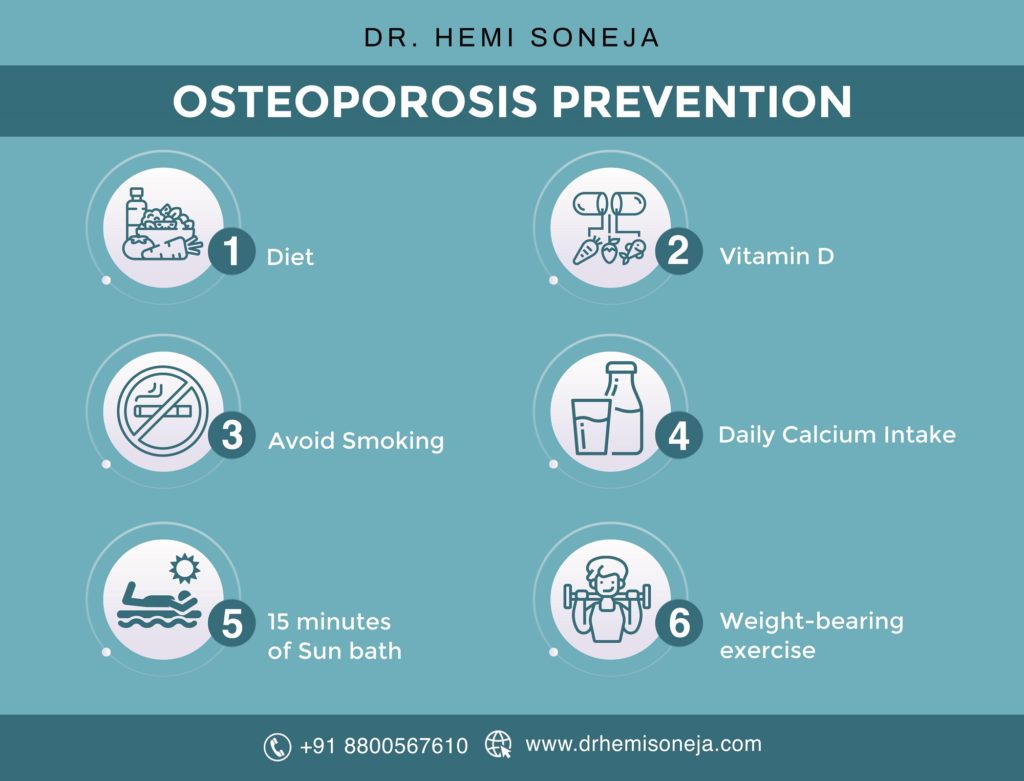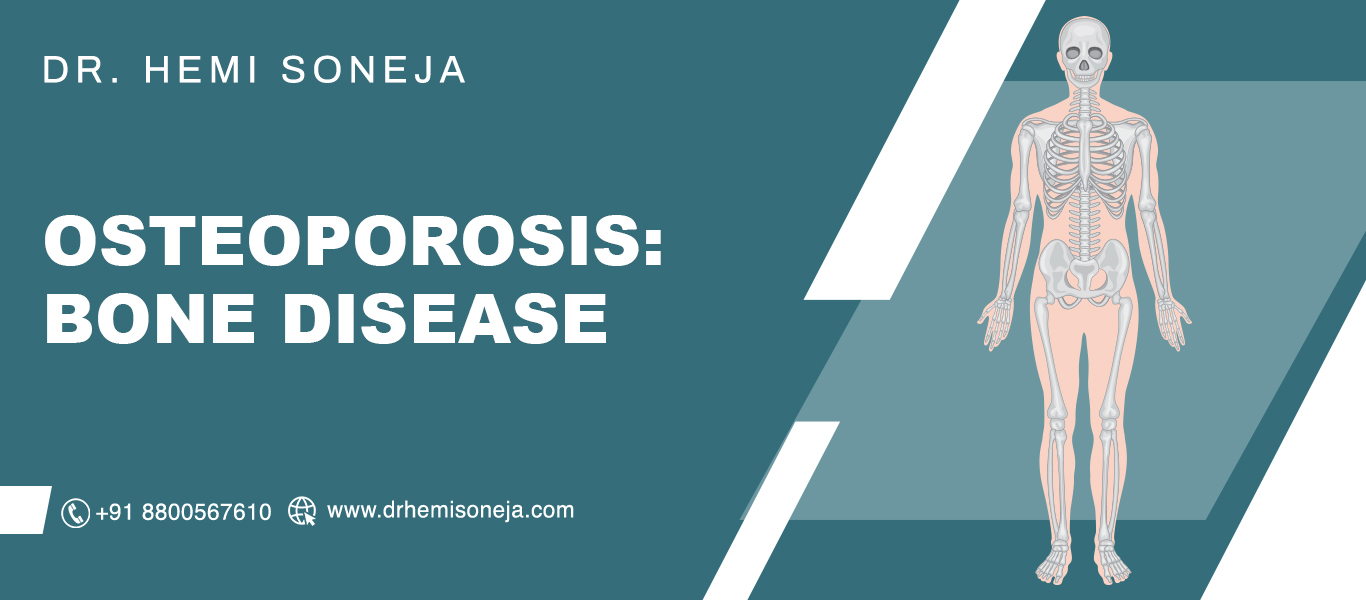Osteoporosis is a disease that causes your bones to become brittle and weak, becoming a major cause of fractures in older people. Even simple activities like coughing or bending can lead to fractures in osteoporotic bones.
Dr. Hemi Soneja is one of the finest and experienced endocrinologists who also provides the best osteoporosis treatment in Delhi along with nurturing high care for her patients.
In this article, we will discuss the symptoms, causes, diagnosis, and treatment of osteoporosis in delhi in detail.
What is Osteoporosis?
Like all organs of our body, the bones are also a living structure that is constantly being formed and broken at a cellular level. Bones can become osteoporotic when there is a disbalance between these two processes. If too much bone is being broken, or very little bone is being formed or a combination of both, this can lead to osteoporotic changes in the bones.
Calcium is the substance that provides strength to the bone. The bones are like a honeycomb structure, the spaces of which are filled with compounds of calcium. The imbalance leads to less calcium deposition in these spaces, thus, the bones become more ‘porous’ (hence the name osteoporosis), which causes them to become weak and brittle, further leading to common bone fractures.
Who is more likely to get Osteoporosis?
Although osteoporosis can occur in both men and women, women are more likely to get affected by osteoporosis. Women of all ages can get osteoporosis and steps should always be taken by them to prevent this, but it is most commonly seen in post-menopausal women.
Osteoporosis is most common in post-menopausal women because calcium deposition in bones is closely related to the estrogen levels in the body of females. Since after menopause, the levels of reproductive hormones decrease in the body of women, this causes less calcium deposition in the bones and leads to weakening. Osteoporosis can be prevented by a healthy diet and weight-bearing exercises in women.
Causes of Osteoporosis
The basic cause of osteoporosis is less calcium deposition in the bones. There are various risk factors that can cause some specific people to be at a higher risk of developing osteoporosis than others.
Some of these risk factors are mentioned below:
- Gender: Women are at a higher risk than men of the same age group.
- Age: The older population is generally more susceptible to develop osteoporosis.
- Family history: If somebody in your family is suffering from osteoporosis, you are at a higher risk for developing it than the general population.
- Body size: People with smaller body sizes are more likely to develop osteoporosis because they have less bone mass from the beginning.
- Race (genetic factors): Asian and white people are more likely to develop osteoporosis.
- Decreased reproductive hormones: Decreased levels of estrogen is the strongly linked risk factor to the development of osteoporosis.
- Thyroid problems: increased levels of thyroid in the body can lead to osteoporosis.
- Overactive Parathyroid and adrenal gland
Signs and symptoms
There are no overt symptoms in the early stages of osteoporosis and most people with the disease don’t even know they have the disease till they get a fracture.
There are some signs and symptoms that can point towards early osteoporosis which are listed below:
- Stooping
- Back pain
- Decrease in the height over time
- Weakening grip
- Weakening of nails
- Receding gums
- Easy breaking of bones with even minor traumas.

Diagnosis of Osteoporosis
The primary test to diagnose osteoporosis is a bone density scan. As the name suggests, this scan checks the density of the bones of the body and can signal weak and brittle bones. The most commonly used bone density scan is the DEXA or the DXA scan (Dual Energy X-Ray Absorptiometry scan). This scan uses X-rays to measure the density of the bones. The most commonly checked bones are the hip bones or the spine.
Osteoporosis is diagnosed if the bone density lies below 2.5 SD (Standard Deviation) below the average density of bones in that age group. This is called the T score. T score less than 2.5 is diagnostic of osteoporosis.
Other than this, your osteoporosis doctor will order some blood tests like calcium levels, sex hormones levels, thyroid levels, etc for you to determine the cause and chart the treatment strategy.
How is Osteoporosis treated?
The treatment of osteoporosis in Delhi is determined on the basis of the risk of fractures in the next 10 years. If you are at low risk, you might not be given medications and the focus will be on eliminating the various risk factors. You will also be advised to eat a healthy diet and do weight-bearing exercises only.
If you do have a high risk of fractures in the next 10 years, the following medications will be started for you by your osteoporosis doctor:
- Bisphosphonates
- Hormone therapy
- Monoclonal antibody medicines
- Bone building medicines like Teriparatide, etc
Take Away
These were the causes, symptoms, treatment options of osteoporosis in brief. For further information on osteoporosis, consult with a qualified professional who will be able to guide you further.
At Dr. Hemi Soneja Clinic, you will get the best osteoporosis treatment in Delhi, along with the right suggestions and care according to your concerns.



